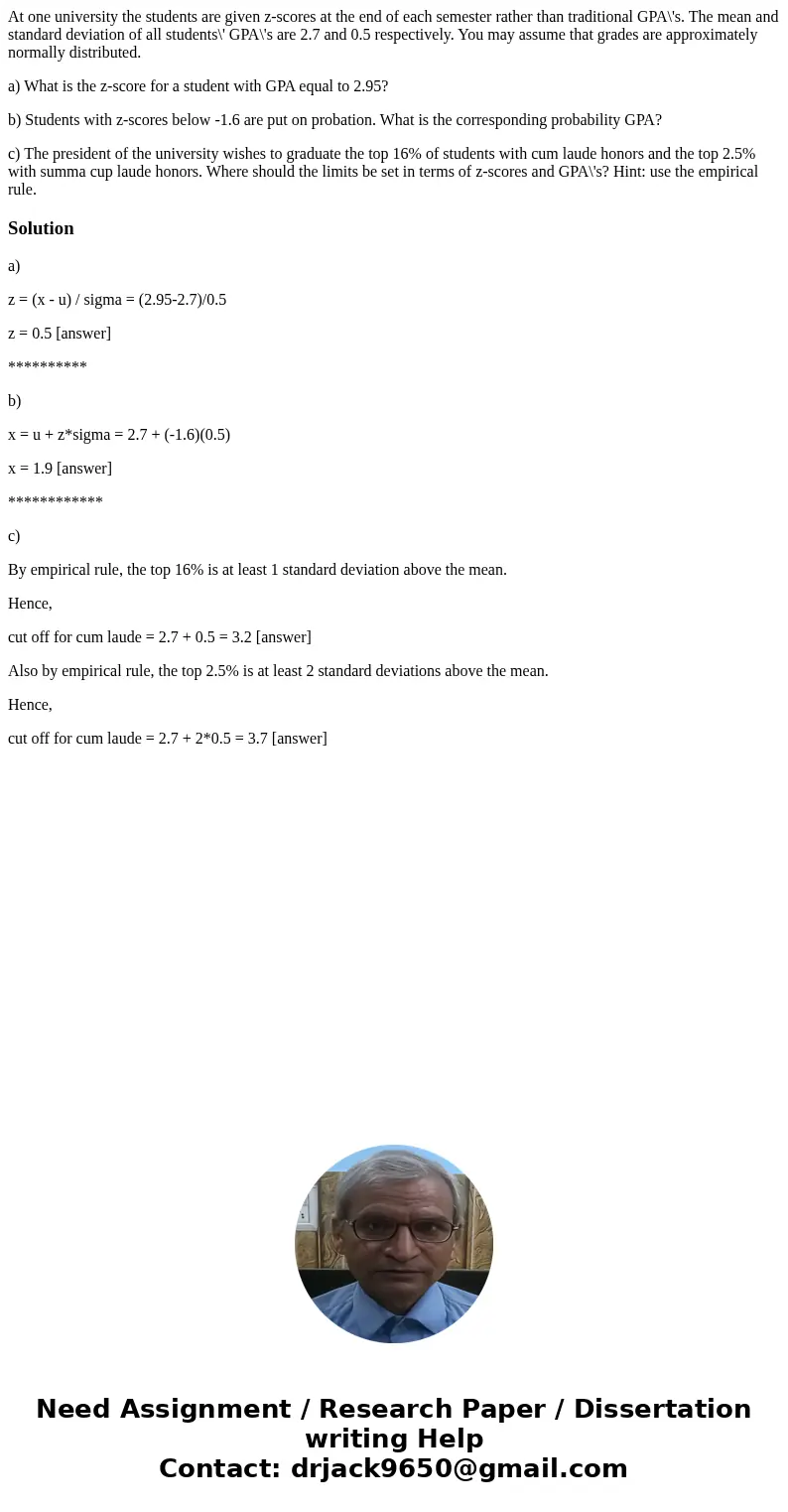At one university the students are given zscores at the end
At one university the students are given z-scores at the end of each semester rather than traditional GPA\'s. The mean and standard deviation of all students\' GPA\'s are 2.7 and 0.5 respectively. You may assume that grades are approximately normally distributed.
a) What is the z-score for a student with GPA equal to 2.95?
b) Students with z-scores below -1.6 are put on probation. What is the corresponding probability GPA?
c) The president of the university wishes to graduate the top 16% of students with cum laude honors and the top 2.5% with summa cup laude honors. Where should the limits be set in terms of z-scores and GPA\'s? Hint: use the empirical rule.
Solution
a)
z = (x - u) / sigma = (2.95-2.7)/0.5
z = 0.5 [answer]
**********
b)
x = u + z*sigma = 2.7 + (-1.6)(0.5)
x = 1.9 [answer]
************
c)
By empirical rule, the top 16% is at least 1 standard deviation above the mean.
Hence,
cut off for cum laude = 2.7 + 0.5 = 3.2 [answer]
Also by empirical rule, the top 2.5% is at least 2 standard deviations above the mean.
Hence,
cut off for cum laude = 2.7 + 2*0.5 = 3.7 [answer]

 Homework Sourse
Homework Sourse